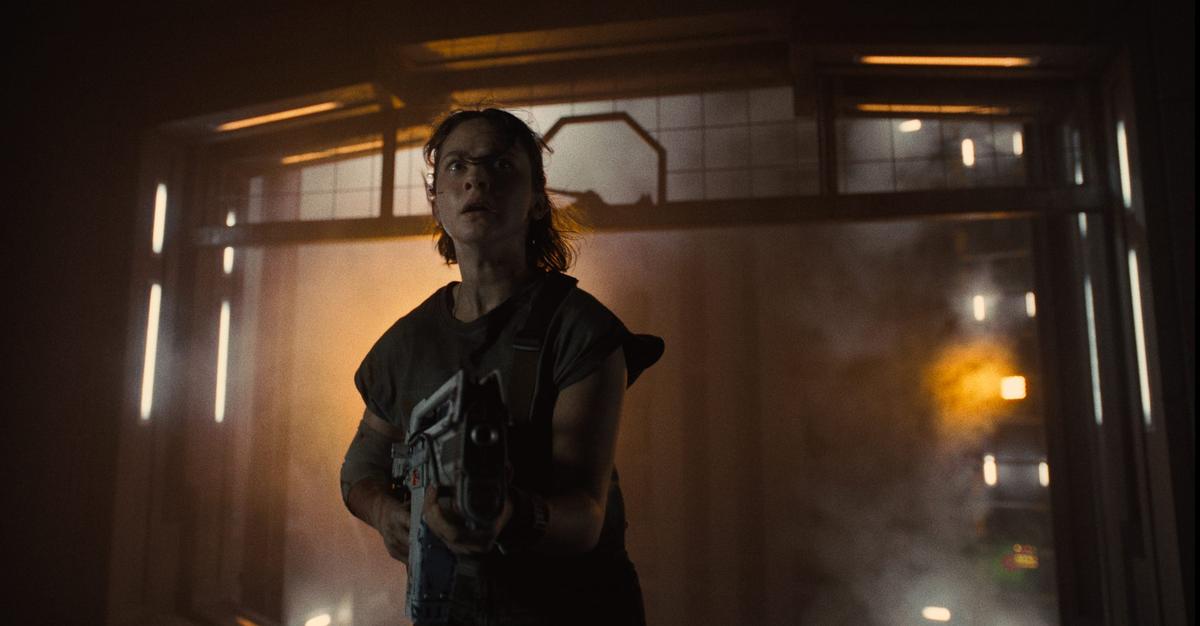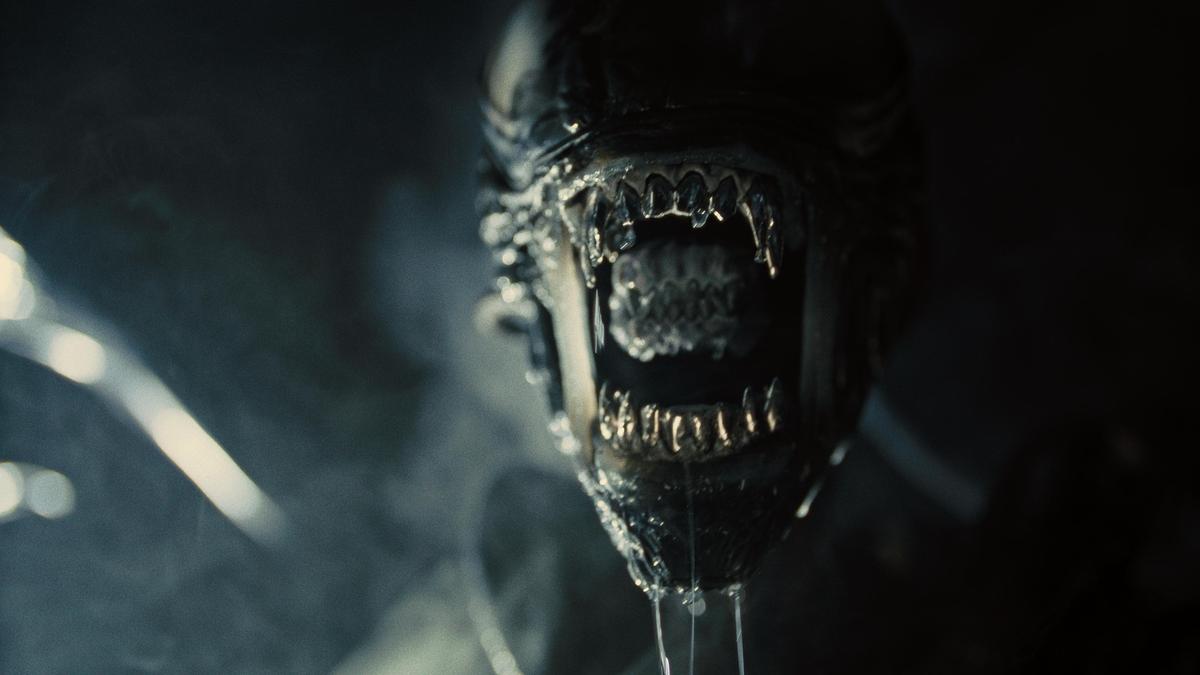[ad_1]
The Alien franchise has long thrived on the malleability of its basic premise: place unsuspecting humans in a confined space with a perfect predator, and then watch as dread, despair, and a whole lot of gore ensue. Yet, with each instalment, this simple formula has been filtered through the distinctive lenses of its directors. From Ridley Scottâs claustrophobic original, a haunting meditation on isolation and corporate indifference, to James Cameronâs bombastic, adrenaline-fueled sequel, each film has stamped its own aesthetic and thematic imprint on the franchise. Now, the modern godfather of the grotesque, Fede Ãlvarez, has sculpted his vision of the franchise into a psychosexual nightmare which embraces its roots with both ooze-soaked hands and yanks us into a relentless, viscerally charged cinematic experience that redefines the potential for nostalgia-fuelled franchise instalments.

Set between the events of Scottâs Alien and Cameronâs Aliens, what Romulus brings to the table is not reinvention, but refinement. The seasoned Uruguayan purveyor of horror behind Evil Dead and Donât Breathe, embraces the franchiseâs legacy with fangirl enthusiasm, and helps Romulus find its footing by sidestepping the pitfalls of reinvention. Instead, Ãlvarez opts for a return to form, an homage to the franchiseâs gritty origins that injects it with a potent dose of contemporary sensibility.
The plot is a straightforward, almost spartan affair â a group of young colonists on a mining planet, desperate to escape their bleak existence, hatch a plan to hijack a seemingly abandoned spaceship. What they discover, of course, is that this twin-ship, dubbed Romulus and Remus, is far from empty.Â
Alien: Romulus (ENGLISH)
Director: Fede Ãlvarez
Cast: Cailee Spaeny, David Jonsson, Archie Renaux, Isabela Merced, Spike Fearn, and Aileen Wu
Runtime: 119 minutes
Storyline: Space colonisers come face to face with the most terrifying life-form in the universe while scavenging the deep ends of a derelict space station
The brilliance of Romulus lies in its atmosphere. Ãlvarez, co-writing with longtime collaborator Rodo Sayagués, understands that beyond the seriesâ biomechanical monstrosities, is its oppressive ambience of impending doom. The filmâs primary setting â a sunless, decaying Weyland-Yutani Corp mining colony â features some breathtaking production design, where rusted metal, toxic fog, and the dim glow of industrial lights create a grunge dystopia. This third-world outpost feels lived-in, worn down by the relentless grind of corporate exploitation, where hope goes to die. Itâs a setting that echoes the claustrophobic tension of Scottâs original, yet makes it feel even more suffocating, more inescapable, and grounds the carnage to follow in a grim reality through some fantastic world-building.

Cailee Spaeny in a still from âAlien: Romulusâ
| Photo Credit:
YouTube/ 20th Century Fox
The young cast, led by Cailee Spaeny as Rain, is a departure from the world-weary crew of the original films. Spaeny brings a raw, unpolished tenacity to the role, a stark contrast to the steely resilience of Sigourney Weaverâs Ripley or the cool pragmatism of Michael Biehnâs Hicks. Rainâs vulnerability, however, does not diminish her strength. Instead, it transforms her into an intelligent, adaptable survivor grappling with the weight of survival in a universe that has no use for the weak. David Jonsson, as the android Andy, delivers a performance that feels both tender and unsettling, as he oscillates between an innocence that draws you in and a detachment that leaves you wary between tender and unsettling.
For all its blood-drenched spectacle, Romulus also manages to slip a heart beneath its chest plate of terror. The relationship between Rain and her android âbrotherâ Andy, injects a dose of pathos into the otherwise relentless carnage. Their dynamic touches on the perennial Alien theme: the quest for humanity in a world that often feels designed to strip it away.
Yet, of course, the H.R. Gigerâs iconic creations are undeniably the true stars of Romulus. As a horror auteur with a tendency of leaving a trail of viscera in his wake, Ãlvarez does not shy away from capturing them in all their horrifying glory. The filmâs set pieces are masterclasses in tension, with Ãlvarez orchestrating gut-wrenching scenes that will likely leave you squirming uncomfortably. The gore is plentiful, the violence unflinchingly graphic, but it never feels gratuitous. Every spattering of flesh, every torn membrane serves a purpose â to remind us of the fragility of the human body and the unrelenting, unforgiving primal primality of the xenomorphs.

A still from âAlien: Romulusâ
| Photo Credit:
YouTube/ 20th Century Fox
The filmâs most unsettling scenes donât just focus on the creatureâs merciless hunt, rather, the perverse intimacy of those encounters. Ãlvarez lingers on the invasiveness of these moments, with every phallic creatureâs lethal embrace birthing even more horrifying entities. As was the case in his Evil Dead, the body, in Ãlvarezâs vision, isnât just a vessel to be destroyed in increasingly imaginative ways, but a site of a twisted, bestial violation which culminates in a scandalising final act.
The sound design, led by Lee Gilmore, is some of the most outstanding this year. The theatre-rattling takeoff into space, the hiss of acid cutting through steel and flesh alike, the sickening squelch of bodies being torn apart and chestâs being burst agape â itâs all rendered as a jarring sensory experience thatâs disturbingly immersive. Benjamin Wallfischâs slick synth-laden motifs and cleverly-hidden callbacks to prior films complements the sense of dread that permeates every frame.

With Romulus, the Alien franchise storied lineage has found fresh, fertile ground for its horrors, spinning a tale of isolation, corporate insouciance, and the grotesque beauty of lifeâs most primal fears. It is a film that revels in its venereal gore and its unrelenting tension and is quite simply, one of the most entertaining genre films this year. Whether youâre a die-hard fan or a newcomer to the franchise, Alien Romulus is a ride worth taking, though you may want to bring along a strong stomach for the journey.
Alien: Romulus is currently running in theatres
[ad_2]
Source link